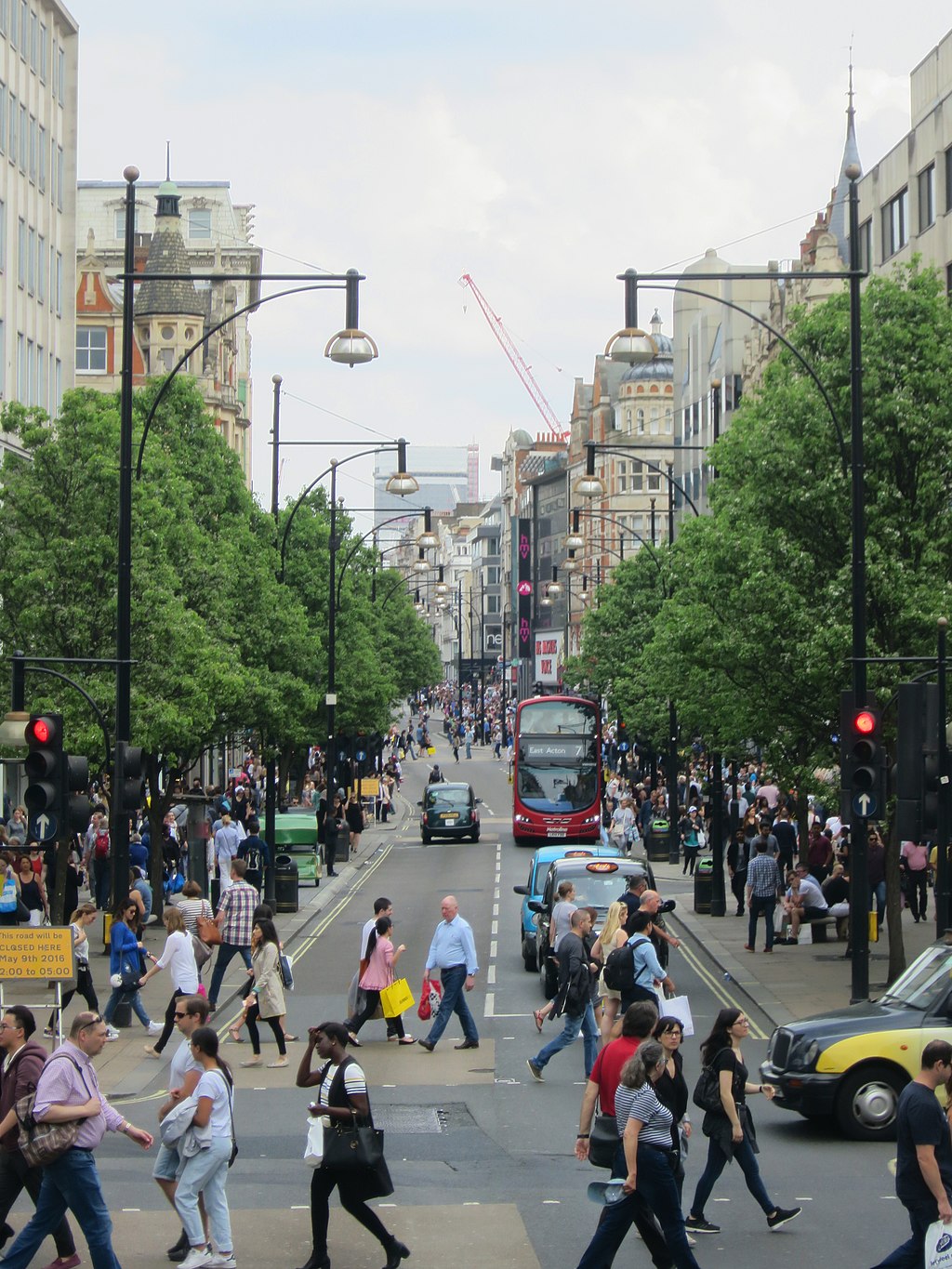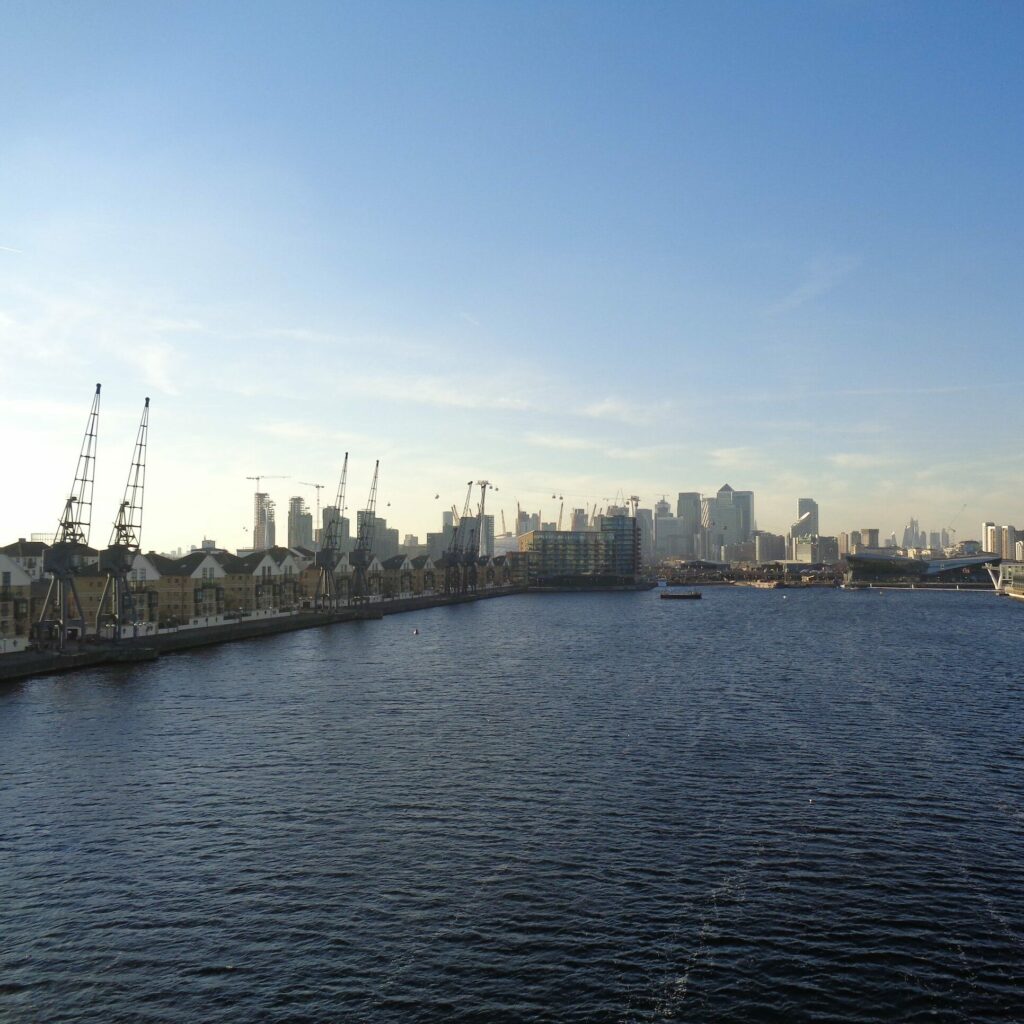
Read here which architectural and urban planning icons every London visitor should haven seen and which new urban planning projects are currently in the making.
Billboard
Skyscrapper
Halfpage
London is without doubt one of the most interesting cities to visit as an urban planner. Countless new developments coexist with well-known architectural highlights. And from one visit to the next, things will have changed yet again. At the same time, this beautiful city manages to never lose its uniqueness.
Architectural and urban planning icons in London
An architectural tour of London could start at the iconic Barbican Centre. This 1965 brutalist building complex houses some remnants of the Roman city wall of London. Partly hidden in an underground Barbican parking garage, the ancient stones remind visitors of London’s millennia of history.
From here, it is not far to St. Paul’s Cathedral. This imposing cathedral was designed by Sir Christopher Wren, as were many other buildings in London. The Great Fire of London in 1666 destroyed large parts of the city, giving Sir Christopher Wren a canvas to leave his mark as an architect – until today, London is influenced by him more than by any other architect.
Today, skyscrapers with names such as The Shard, the Cheesegrater, the Gherkin, the Walkie Talkie are dotted among the more than 50 church spires designed by Sir Christopher Wren. But overall, London is not a particularly high-built city, allowing old buildings to shine.
Medium Rectangle
Halfpage
London as an Olympic city
The 2012 Olympics still shape the city. Much of the investment has given London its current face. An interesting place to visit is the Queen Elizabeth Park. Surrounded by much criticism, this area around Stratford underwent extensive redevelopment before and after the Olympics. More than 10,000 new homes will have been built here by 2030 and new neighbourhoods are appearing.
Transport connections have improved considerably, and the reuse of the Olympic Grounds as the Queen Elizabeth Park is an example for the sustainable reuse of Olympic infrastructure. For example, the park provides many cycling and walking routes and a free swimming pool with Olympic dimensions; and it protects the natural habitats of animals. It is also a water-smart park that helps to manage floodings in the area.
Medium Rectangle
Halfpage

London as a smart and green city
London is also known as one of the world’s smartest cities. This is exemplified by many innovations in everyday life, such as checking in and out of the Tube with contactless credit cards, or the Ultra-Low Emission Zone (ULEZ) in central London that keeps expanding, meaning that many cars whizz by silently due to their electric engine.
Canary Wharf, the former docklands, is where the smart city feels particularly tangible. Among glistening new office towers, countless businessmen and women rush past. Waste bins here are designed explicitly for take-away coffee and sandwich wrappings. But there is real change happening.
The new Wood Wharf development, for example, is one of the greenest construction projects in the world. At the same time, affordable housing is one of the biggest challenges in this development. Experts call for 25 to 40 per cent of affordable homes, but this is rarely the case in London. Still, somehow Canary Wharf manages to be attractive even after business hours, which is an impressive feat for a completely redeveloped, artificial city district.
If you stand on the Isle of Dogs and look out to the Thames, you might notice the sleek, super-fast ferries bearing the Uber sign. These speed boats are an example for the many public-private partnerships that shape London’s cityscape more and more.
From here, you can also spot the Thames Barrier, an example for London’s adaptation measures to climate change. This construction spans 520 metres of the River Thames around Woolwich. It protects about 125 square kilometres of central London from flooding. 10 steel gates can be raised into opposition. They are closed under storm surge conditions to protect London. The impressive Barrier is one of the largest movable flood barriers in the world. It is managed by the Environment Agency of the city.
Medium Rectangle
Halfpage
London as a people-friendly city
Most visitors will end up at London’s central shopping street, Oxford Street. This street has been in the media recently as an example of very successful pedestrianisation. Oxford Street is now a walking-friendly environment with only very few cars passing through. After much consideration, the busy Oxford Circus crossing will be transformed into two pedestrianised piazzas to address air quality, pedestrian congestion and traffic. This also exemplifies the goals of the ULEZ.

However, not every urban planning intervention in London is a success. For example, the Marble Arch Mound has led to criticism. This 25-metre-high artificial hill was commissioned by Westminster Council to draw shoppers and tourists back to London’s West End after pandemic-related economic losses.
But the hill has quickly turned into a political and financial disaster. Located on the corner of Oxford Street and Hyde Park, it was intended to become a destination with views of the city, allowing for pleasant strolls and impressive photos. Exploding building and operating costs as well as problems with the plants that were supposed to green the Marble Arch Mound have resulted in a strange scaffold-clad structure that is more brown than green. The Guardian reported that people come here to “see how bad it is” and plans for an entrance fee have been abandoned.
Medium Rectangle
Halfpage

New urban planning projects
One of London’s biggest ongoing projects is the King’s Cross redevelopment. This key station was seriously dilapidated after the Second World War. Towards the end of the 20th century, the area was even dangerous, known for prostitution and crime. Now at 90% completion, the redevelopment started around the year 2000. It started out as a contested project, just like the Queen Elizabeth Park, but has garnered approval and shows striking results already.
The construction of the Eurostar terminal was crucial for the revival of the area. Located in St. Pancras, the Eurostar terminal is in use since 2007. Before, trains left from Waterloo. New high-speed trains now connect London St. Pancras to Brussels and Paris in only a few hours.
Around 50 new buildings, 20 new streets, 10 new public spaces, 20 restored historic buildings and up to 2,000 homes characterise the area around King’s Cross and St. Pancras today. The arrival of tech giants Google and Facebook brought investment and international prestige. Other stakeholders such as the University of the Arts London followed.
The nearby Regent’s Canal used to carry boats full of coal to fuel the UK’s capital. Now, you will see many houseboats and an attractive walkway along the water. One of the new developments that is part of the King’s Cross redevelopment is the Coal Drops Yard. Conceived by architects from Heatherwick Studio, this combination of shopping and public space has proven to be particularly popular.
Medium Rectangle
Halfpage


Another interesting development is the Low Line. Inspired by New York City’s High Line, this linear park will follow the old Victorian railway arches from The Shard to Bermondsey, connecting some very different areas and providing commercial as well as recreational space. This ambitious project is still starting out, but you can see the first signs in the buzzing arches around The Shard.
Strolling through the city, visitors will see many more examples of urban planning initiatives in London. It is always worth stopping, scanning the QR code if available, and joining the vision of this always-changing metropolis.




















